Abstract
Pure spore antigens for the immunization of rabbits were prepared by enzymic digestion of vegetative components and separation of the cleaned spores in polyethylene glycol. Spore antisera were prepared to strains representative of toxigenic Clostridium botulinum type E; nontoxigenic boticin E-producing variants; nontoxigenic nonproducers of boticin E; nontoxigenic “atypical” strains, which differ somewhat from C. botulinum type E in their physiology; C. botulinum types A and B; and C. bifermentans. They were tested against these and additional strains representative of the above groups, other types of C. botulinum, and other Clostridium species. There was no evidence of agglutination of flagellar or somatic antigens of vegetative cells by these antisera. Agglutination and agglutinin absorption tests showed common antigens among toxigenic type E strains and nontoxigenic variants, both producers and nonproducers of boticin E. Some nontoxigenic “atypical” strains varied in their ability to be agglutinated by type E antisera, and others did not agglutinate at all. Of those atypical strains that were not agglutinated, one was agglutinated by C. bifermentans antiserum. Antisera prepared against C. botulinum types A and B and C. bifermentans did not agglutinate the spores of type E or its variants nor share antigens common to each other. Similarly, antisera to type E, its nontoxigenic variants, and nontoxigenic atypical strains did not agglutinate other C. botulinum types or any other Clostridium species investigated.
Full text
PDF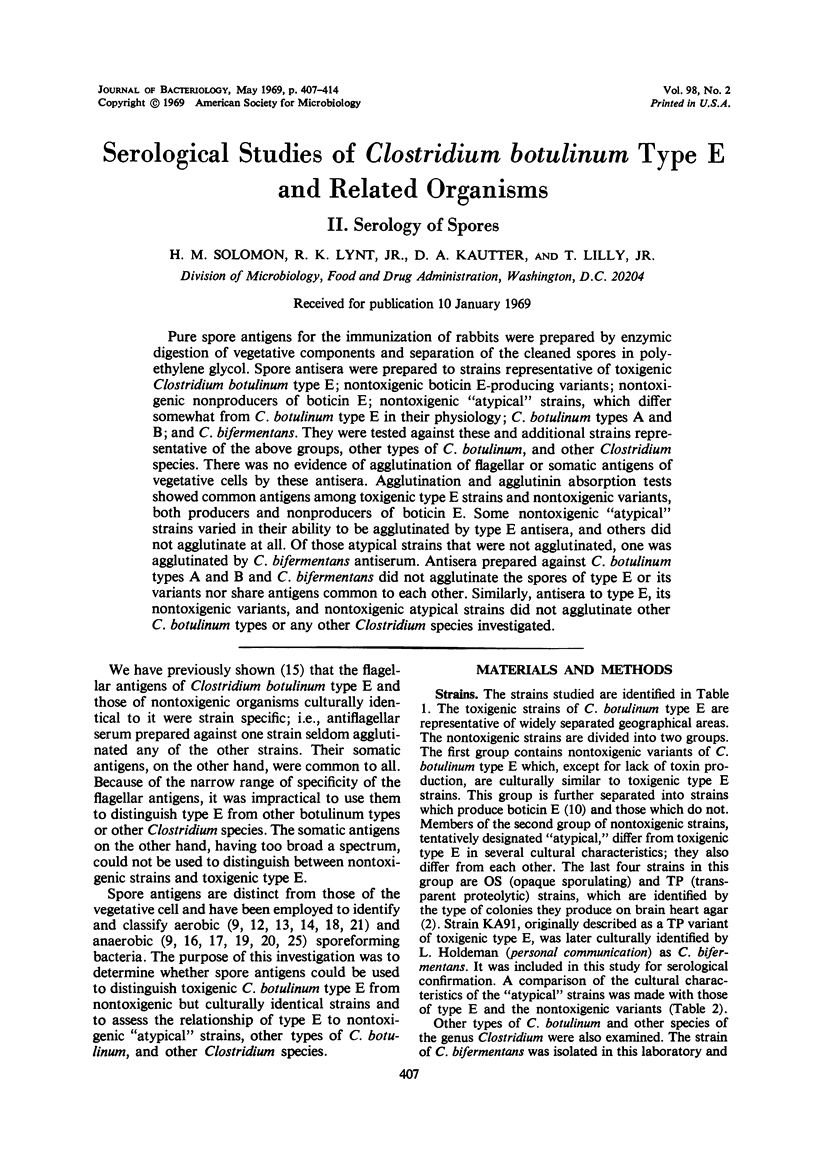
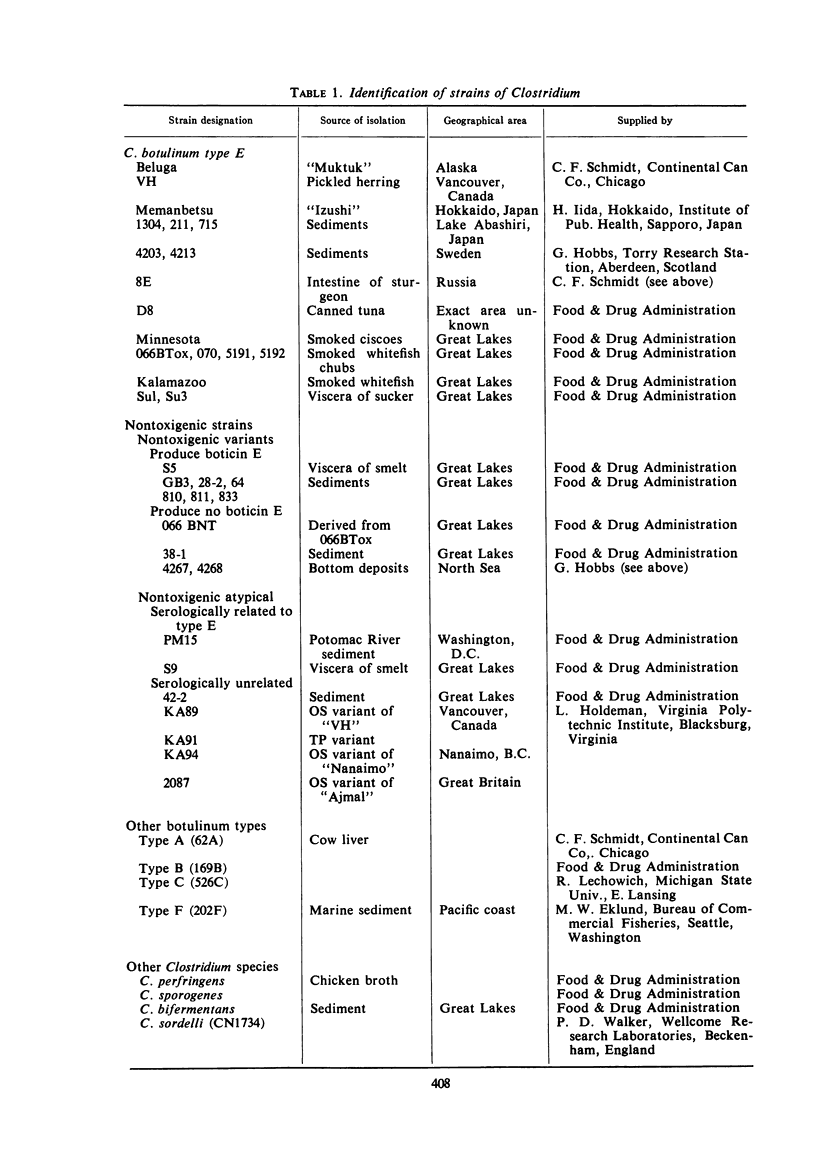
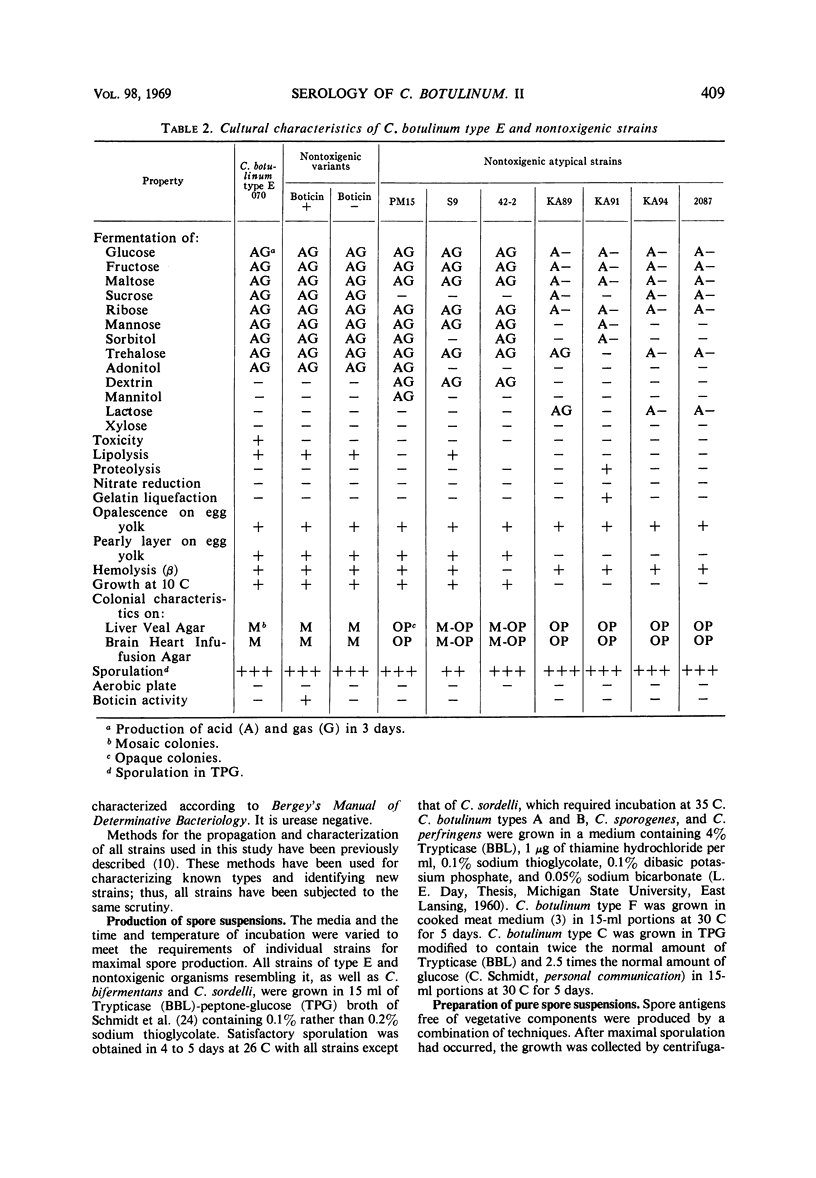
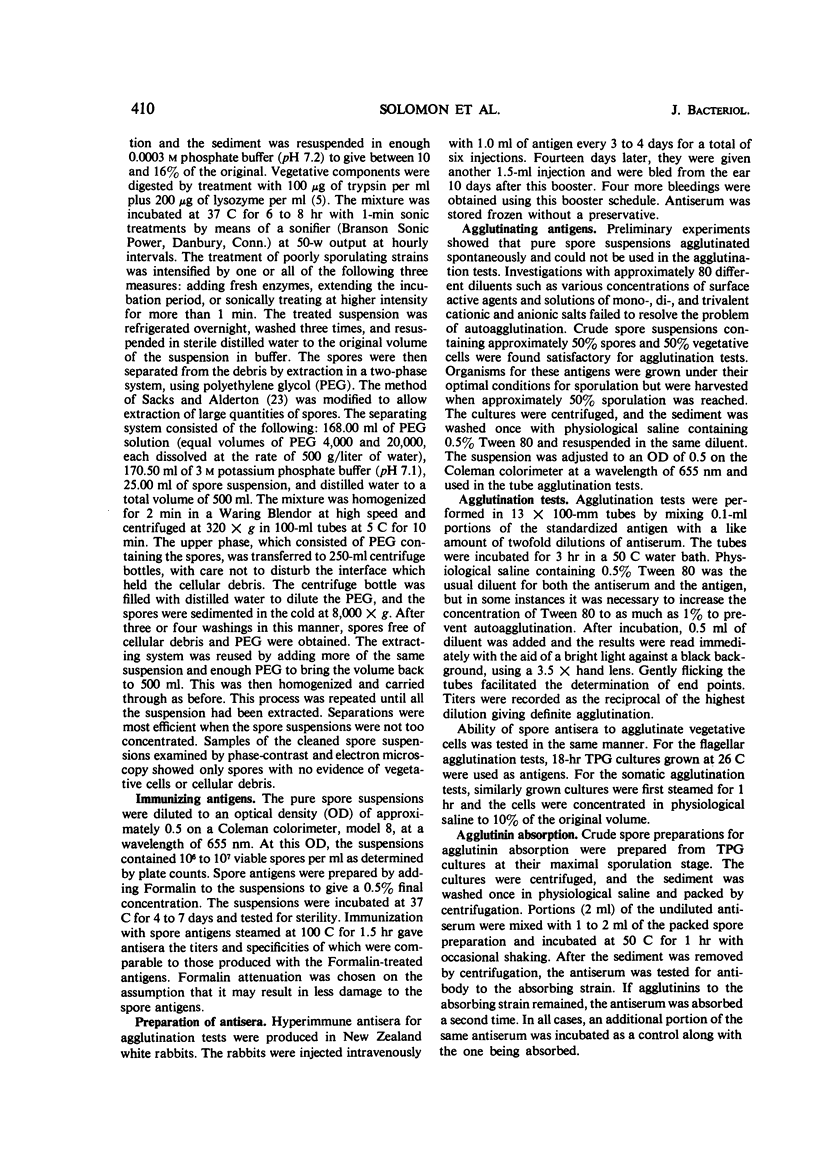
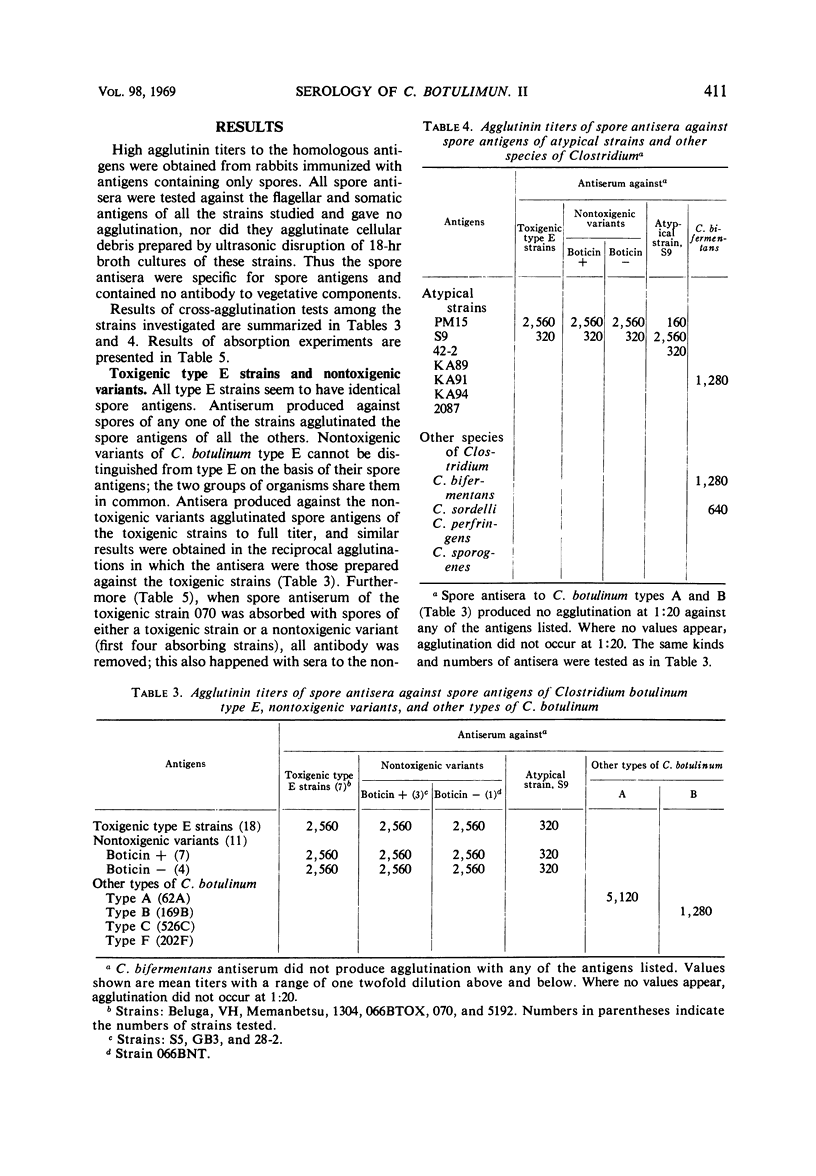
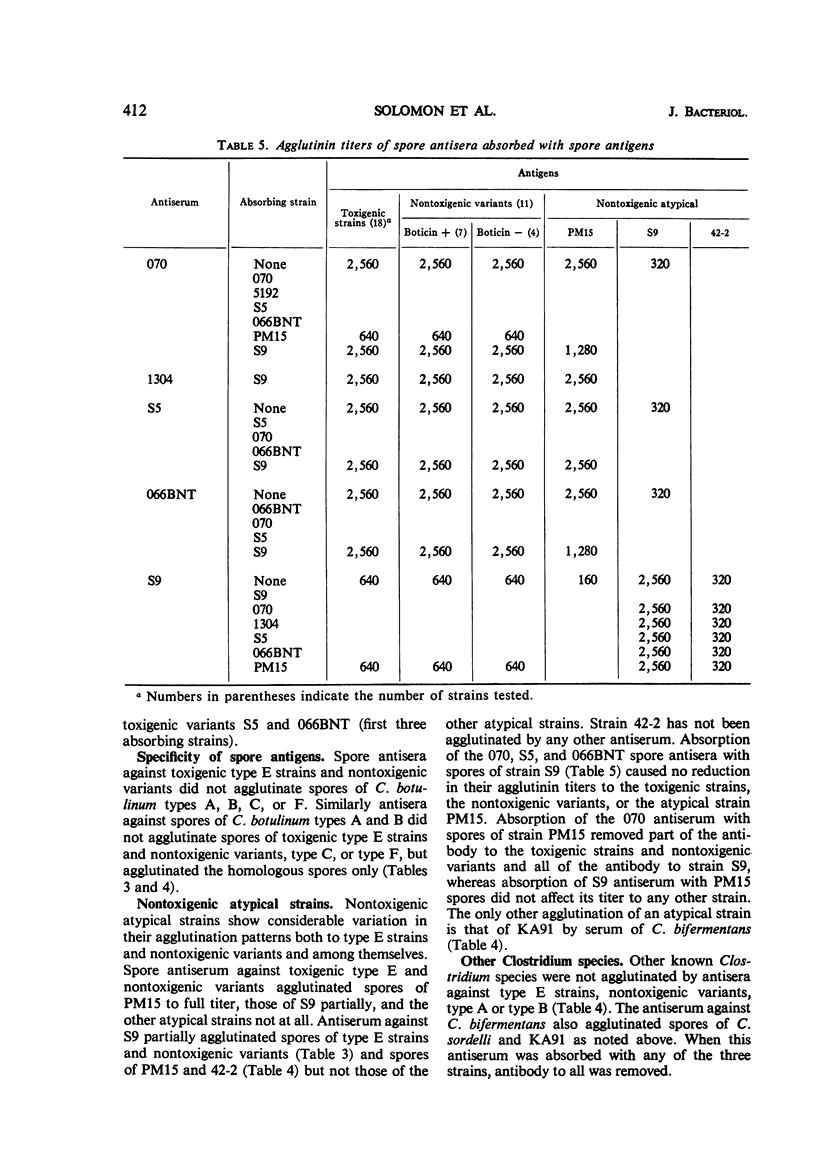
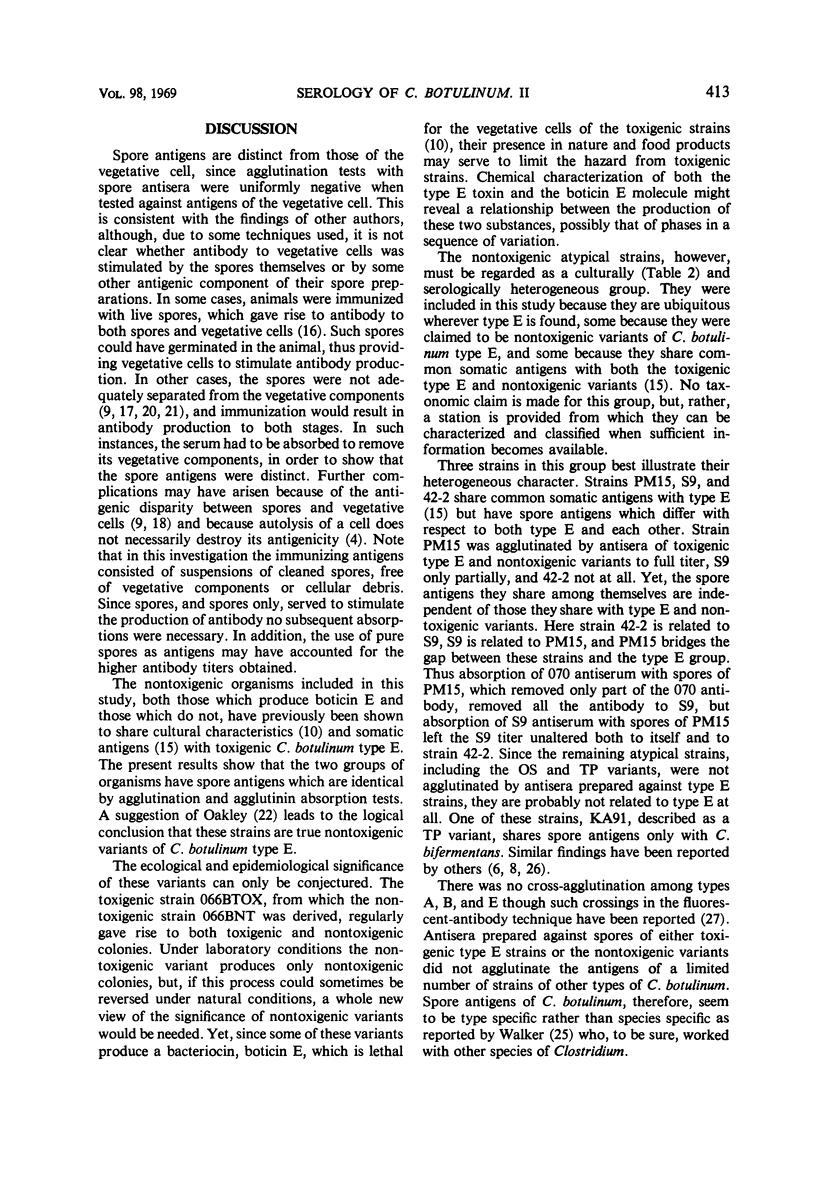
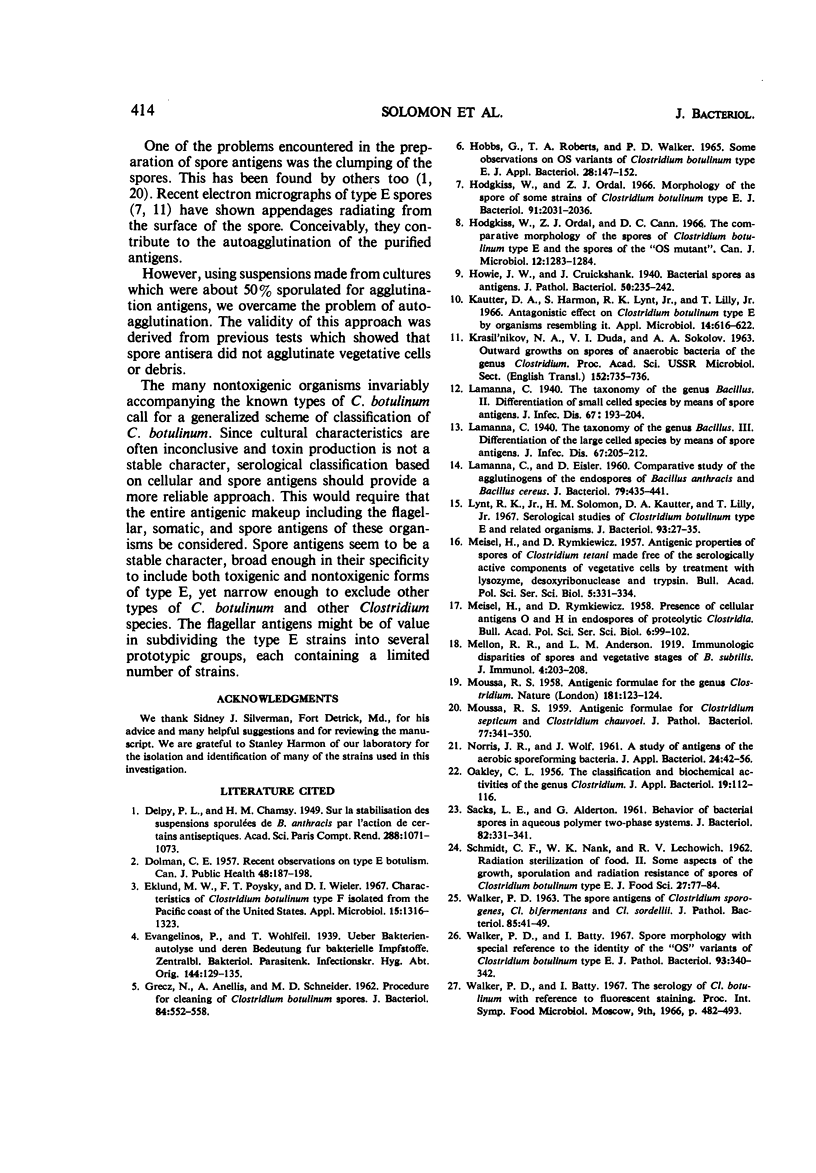
Selected References
These references are in PubMed. This may not be the complete list of references from this article.
- DOLMAN C. E. Recent observations on type E botulism. Can J Public Health. 1957 May;48(5):187–198. [PubMed] [Google Scholar]
- Eklund M. W., Poysky F. T., Wieler D. I. Characteristics of Clostridium botulinum type F isolated from the Pacific Coast of the United States. Appl Microbiol. 1967 Nov;15(6):1316–1323. doi: 10.1128/am.15.6.1316-1323.1967. [DOI] [PMC free article] [PubMed] [Google Scholar]
- GRECZ N., ANELLIS A., SCHNEIDER M. D. Procedure for cleaning of Clostridium botulinum spores. J Bacteriol. 1962 Sep;84:552–558. doi: 10.1128/jb.84.3.552-558.1962. [DOI] [PMC free article] [PubMed] [Google Scholar]
- Hodgkiss W., Ordal Z. J., Cann D. C. The comparative morphology of the spores of Clostridium botulinum type E and the spores of the "OS mutant". Can J Microbiol. 1966 Dec;12(6):1283–1284. doi: 10.1139/m66-170. [DOI] [PubMed] [Google Scholar]
- Hodgkiss W., Ordal Z. J. Morphology of the spore of some strains of Clostridium botulinum type E. J Bacteriol. 1966 May;91(5):2031–2036. doi: 10.1128/jb.91.5.2031-2036.1966. [DOI] [PMC free article] [PubMed] [Google Scholar]
- Kautter D. A., Harmon S. M., Lynt R. K., Jr, Lilly T., Jr Antagonistic effect on Clostridium botulinum type E by organisms resembling it. Appl Microbiol. 1966 Jul;14(4):616–622. doi: 10.1128/am.14.4.616-622.1966. [DOI] [PMC free article] [PubMed] [Google Scholar]
- LAMANNA C., EISLER D. Comparative study of the agglutinogens of the endospores of Bacillus anthracis and Bacillus cereus. J Bacteriol. 1960 Mar;79:435–441. doi: 10.1128/jb.79.3.435-441.1960. [DOI] [PMC free article] [PubMed] [Google Scholar]
- Lynt R. K., Jr, Solomon H. M., Kautter D. A., Lilly T., Jr Serological studies of Clostridium botulinum type E and related organisms. J Bacteriol. 1967 Jan;93(1):27–35. doi: 10.1128/jb.93.1.27-35.1967. [DOI] [PMC free article] [PubMed] [Google Scholar]
- MOUSSA R. S. Antigenic formulae for Clostridium septicum and Clostridium chauvoei. J Pathol Bacteriol. 1959 Apr;77(2):341–350. doi: 10.1002/path.1700770204. [DOI] [PubMed] [Google Scholar]
- MOUSSA R. S. Antigenic formulae for the genus Clostridium. Nature. 1958 Jan 11;181(4602):123–124. doi: 10.1038/181123a0. [DOI] [PubMed] [Google Scholar]
- SACKS L. E., ALDERTON G. Behavior of bacterial spores in aqueous polymer two-phase systems. J Bacteriol. 1961 Sep;82:331–341. doi: 10.1128/jb.82.3.331-341.1961. [DOI] [PMC free article] [PubMed] [Google Scholar]
- WALKER P. D. The spore antigens of Clostridium sporogenes, Cl. bifermentans and Cl. sordellii. J Pathol Bacteriol. 1963 Jan;85:41–49. doi: 10.1002/path.1700850105. [DOI] [PubMed] [Google Scholar]
- Walker P. D., Batty I. Spore morphology with special reference to the identity of the "O.S." variants of Clostridium botulinum type E. J Pathol Bacteriol. 1967 Jan;93(1):340–342. doi: 10.1002/path.1700930136. [DOI] [PubMed] [Google Scholar]


